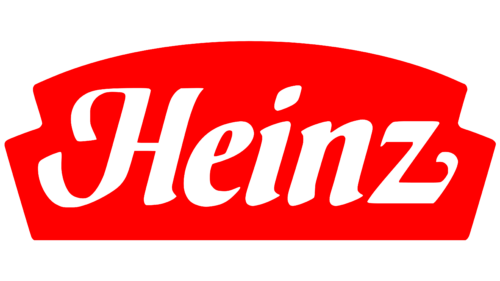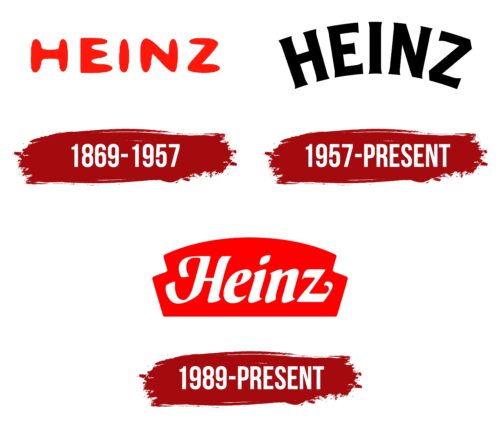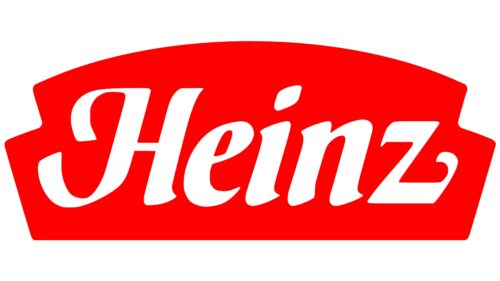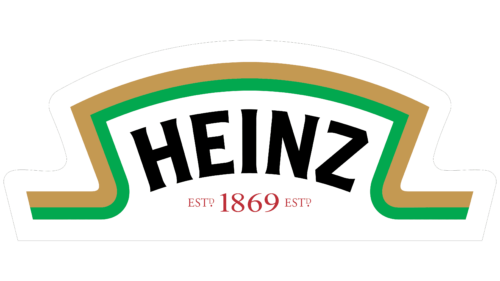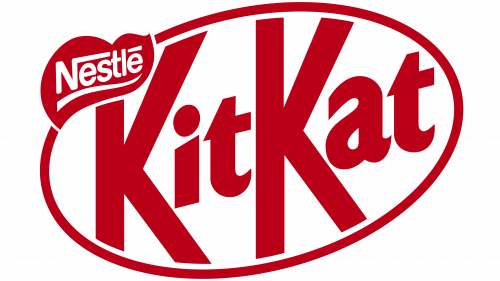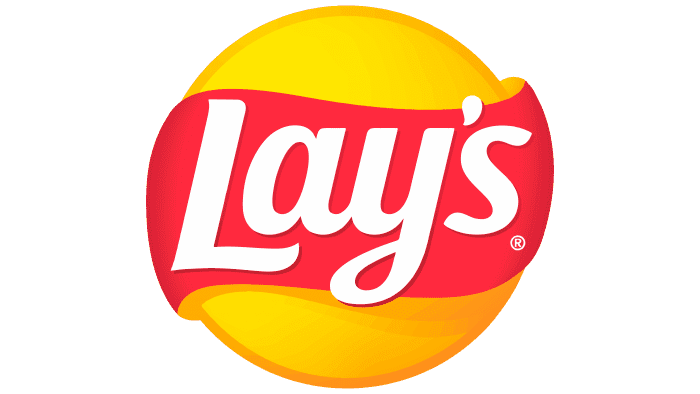Despite its 150-year history, the Heinz logo hasn’t changed that often, with a later variation of the emblem used alongside the current logo. All this speaks of the company’s conservatism, stability, and commitment to unchanging values.
Heinz: Brand overview
Heinz is an American manufacturer of natural canned food. Belongs to the Berkshire Hathaway holding. It is part of the Kraft Heinz association with a 51% share—profit for 2021 of $255 million. The Heinz logo adorns 5,700 varieties of the company’s products. Henry Heinz created the company on the second attempt (the first partnership business, in 1869, with neighbor Clarence Noble, went bankrupt and closed). He started by making horseradish, then moved on to ketchup and went on to create many unique recipes sold all over the world. Berkshire Hathaway bought the company in 2013 and made it private. In 2015, Berkshire merged it with another of its firms to form the Kraft Heinz Company.
Heinz was established in 1869 by Henry John Heinz in Sharpsburg, Pennsylvania. It all started with selling horseradish in local markets. By 1876, Heinz and L.C. Noble were marketing tomato ketchup in clear glass bottles, allowing customers to assess the quality before purchasing. This innovation set a new standard for product transparency.
By 1888, the operation had grown into the H.J. Heinz Company, boasting a diverse product line that included over 60 items, among them the now-famous Heinz “57” varieties.
Heinz began its global expansion in the early 1900s, opening manufacturing plants in the UK, Canada, and Australia. It also launched the “pickles-to-pie” advertising campaign to showcase the wide range of its offerings.
World War II marked a pivotal period for Heinz, as it became a significant supplier to the U.S. armed forces, adapting its product range to meet the needs of military personnel.
The post-war era saw Heinz expand and diversify its product portfolio, introducing barbecue sauces, frozen dinners, and baby foods in the 1950s and 1960s. This period also saw Heinz extend its reach into Europe, Latin America, and Asia.
Innovation continued in the 1980s with the introduction of the Dip & Squeeze ketchup packaging, making condiment use more convenient for consumers on the go.
The 1980s and 1990s were characterized by strategic acquisitions and divestitures as Heinz honed its focus on core product categories, shedding non-core businesses while adding various condiment and snack brands to its portfolio.
2013 was a landmark year when Heinz was acquired for $28 billion by a consortium led by Berkshire Hathaway and 3G Capital. This acquisition initiated a phase of significant restructuring and cost optimization.
In 2015, Heinz merged with Kraft Foods to form the Kraft Heinz Company, bringing together two iconic food industry giants under one corporate umbrella.
Today, Heinz is globally recognized and cherished, selling over 650 million ketchup bottles annually and distributing products in 200 countries. Its journey from a humble beginning with horseradish to becoming a dominant force in the global food industry underscores its commitment to innovation, quality, and providing affordable, convenient food options worldwide.
Meaning and History
Since its founding in the mid-19th century, Heinz’s logo, typically red or black, has symbolized its strong identity. Over the years, Heinz has made only subtle changes to this logo, reflecting a commitment to stability and reliability. This conservative approach to branding underscores the company’s respect for its heritage and traditions, which have played a crucial role in building a long-standing trust with consumers.
What is Heinz?
A 150-year-old Pennsylvania food company with $25 billion in sales. It offers six types of products, including sauces and ketchup bottles, salad dressings, snacks, baby food, and desserts. The most famous product is organic ketchup.
1869 – 1957
The entrepreneur chose a simple option for the logo – the word Heinz, written in red. The name on the logo is the founder’s surname, typical for the 19th century and the beginning of the 20th. The companies were family-owned, with the owners often living on or near the second floor of the office. The owner’s name guaranteed the company’s recognition, reputation, and reliability.
Interestingly, John Heinz named the firm after the brothers after his company went bankrupt. Only 13 years later could he give the company his name. Therefore, Heinz on the logo meant John and Frederic Heinz.
The visual sign appeared after 1975. In 1869, the business and the company’s name were joint. Therefore, the emblem could not use the name of only one participant. Only after the bankruptcy and the founding of a new company in 1875 did Heinz wholly own it.
Henry Heinz was not ashamed to use the family name for the emblem, as his products were of very high quality. He mentioned that he began to put his name on the labels when he was sure he offered safe food. As proof, Heinz began using transparent packaging, which was not typical for the market, so buyers could see how good his product was. And later, he went even further, being the first to offer a tasting of his products in stores. Therefore, the word Heinz was associated with most premium goods, and it was enough on the logo.
The inscription distinguishes:
- Font with tapered ends. He made the letters slightly “pot-bellied,” like elongated jars with narrowed necks in which the goods were packed. It seemed that each letter was drawn with a pen from a drop of ketchup, which the businessman had been producing since 1876 (another indication of the logo’s appearance after the bankruptcy).
- There was wide spacing between letters, which showed that the owner did not hide the contents of his goods. Bottles, like the letters in the logo, can be carefully examined from all sides.
The red color was not chosen by chance. It is the color of ripe tomatoes—the main ingredient of the composition. Red also testified to a great love for his work. Thanks to her, in 1896, Henry was named the King of Ketchup, and his product was written about in the New York Times.
Interestingly, the first slogan, “57 varieties,” comprised Henry and his wife’s favorite numbers and did not correlate with the company’s assortment. Indeed, by the end of the 19th century, the company’s price list included more than 60 products developed according to Henry’s recipes.
1957 – today
The logo update shows how much the firm has expanded. The founder’s name is still written in large capital letters, stretched upwards, arranged in an arch.
There are several separate divisions associated with the Heinz name. Several factories were opened, and 1936 Heinz Seed was created (selecting and cultivating the best tomato varieties). The company’s products include sauces, bottled ketchup, mayonnaise, and canned goods.
The logo covers all this abundance, heading and surrounding it. It also shows special concern for the company’s employees. Back in the days of Henry Heinz, his employees were issued life insurance, and all medical expenses were paid.
The name stretches towards the sun, showing blossoming and growth. Upper-case letters represent the company’s products, each ranked first or second in its segment.
The arched inscription looks friendly and homely. Heinz has always strived to make his dishes look exactly like home cooking.
The black color of the inscription shifts the focus from ketchup, pointing to various products. It is a shade of power, strength, and dominance over competitors.
1989 – today
Heinz Ketchup is used to prepare for space flights. In 1990, it was officially approved as food for astronauts. This is one of the few goods worldwide that spread beyond Earth.
The red backing in an arched style indicates leadership and reaching the top, and it shows that the tomatoes helped the company achieve such heights. It also shows the best products in the premium segment. The substrate can change color to black, white, or cucumber green in various products associated with naturalness.
Interestingly, the company originally wrote the name on the substrate of the cucumber shape.
The white color of the inscription indicates the pioneer. It also demonstrates the whiteness and naturalness of all products. The owner personally vouched for her. The company monitors the quality, from planting raw materials to bottling them in cans.
The first and last letters of the logo have swirls that look like ribbons from a cash register.
Font and Colors
The main colors of the logo are white and red.
- Red represents vivid impressions, excellent taste, passion for their work, and the desire to present the best results.
- White – care for sterility and cleanliness—cultivate completely organic raw materials, no chemical preservatives.
The logo font resembles Vario Italic but has unique H and Z swirls.
FAQ
What does the Heinz logo mean?
The Heinz logo looks like a “keystone,” which shows the company’s strong connection to Pennsylvania, known as the “Keystone State.” This shape highlights how important Pennsylvania was in the early history of the United States and how Heinz aims to be an essential part of our diets. The term “Keystone State” symbolizes something crucial that holds other things together, just like Pennsylvania’s role in history and Heinz’s role on our dining tables.
The logo also acknowledges Heinz’s roots in Pittsburgh, Pennsylvania, where Henry John Heinz started in 1869. It celebrates its growth by becoming a worldwide name.
Naming a stadium Heinz Field in 2001 was a big deal. It showed how deeply Heinz is woven into Pennsylvania’s culture and community, impacting more than just business.
Who designed the Heinz logo?
The design company Jones Knowles Ritchie (JKR) was tasked with refreshing the Heinz logo. Their goal was to unify the Heinz brand globally, ensuring all Heinz products have a consistent appearance while honoring the company’s rich history. JKR, with its extensive expertise in branding and design, aimed to modernize the Heinz logo to appeal to today’s consumers. They focused on maintaining the company’s established trust and heritage. In doing so, JKR updated the logo and packaging to emphasize Heinz’s long-standing legacy.
What font is the Heinz logo in?
The Heinz logo stands out with its unique, rounded sans-serif font. The rounded edges of the letters make the logo welcoming and distinct, which helps Heinz get noticed in the busy food market. Sans-serif fonts have a clean look and are easy to read, which fits modern design and makes the Heinz logo more readable. Heinz creates a strong identity by choosing this font style that draws attention to store shelves worldwide. The font’s design reflects Heinz’s commitment to quality and aims to appeal to customers in a friendly way.
Who owns Heinz now?
Heinz joined forces with Kraft Foods Group on July 2, 2015, to become The Kraft Heinz Company. This move brought together two of the biggest names in the food world, making them the fifth-largest food and beverage company globally. Under Warren Buffett’s guidance, 3G Capital and Berkshire Hathaway played a significant role in this merger. They merged Heinz and Kraft because they saw a big opportunity. Both brands are known for their popular products and long history. Buffett’s Berkshire Hathaway is known for making smart investment choices, and 3G Capital aims for lasting value. They aimed to make The Kraft Heinz Company a food and beverage industry leader.
Is Heinz profitable?
The Kraft Heinz Company, which includes Heinz, did well financially in 2023. They made a gross profit of $8.926 billion. This was a 9.9% increase compared to the previous year. Even though there were tough times for many businesses, they managed to have a good year financially. In 2022, their profits dropped to $8.122 billion, 6.45% less than in 2021. But in 2023, they improved their profits. This shows that the company is strong and can adapt well in a competitive market. The company’s financial performance in 2023, with an increase in gross profit, shows it is doing well in the food and beverage industry.
Is the Heinz logo a keystone?
The Heinz logo features a keystone shape, respecting its Pennsylvania origins. Pennsylvania is known as the “keystone” state, a title from the 18th century that underscored its crucial role in U.S. history. This element symbolizes the brand’s strong connection to its beginning and the values it stands for.
The keystone in Heinz’s logo and its products highlights the company’s roots in Pennsylvania. It shows Heinz’s commitment to its past, reliability, and quality. This design is more than aesthetic; it signifies Heinz’s identity and its bond with its home state. The logo underlines Heinz’s distinct place in the food industry, suggesting reliability, consistency, and authenticity to people everywhere.
